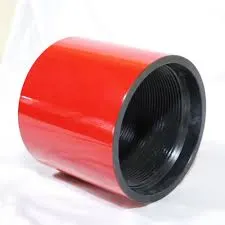- Afrikaans
- Albanian
- Amharic
- Arabic
- Armenian
- Azerbaijani
- Basque
- Belarusian
- Bengali
- Bosnian
- Bulgarian
- Catalan
- Cebuano
- Corsican
- Croatian
- Czech
- Danish
- Dutch
- English
- Esperanto
- Estonian
- Finnish
- French
- Frisian
- Galician
- Georgian
- German
- Greek
- Gujarati
- Haitian Creole
- hausa
- hawaiian
- Hebrew
- Hindi
- Miao
- Hungarian
- Icelandic
- igbo
- Indonesian
- irish
- Italian
- Japanese
- Javanese
- Kannada
- kazakh
- Khmer
- Rwandese
- Korean
- Kurdish
- Kyrgyz
- Lao
- Latin
- Latvian
- Lithuanian
- Luxembourgish
- Macedonian
- Malgashi
- Malay
- Malayalam
- Maltese
- Maori
- Marathi
- Mongolian
- Myanmar
- Nepali
- Norwegian
- Norwegian
- Occitan
- Pashto
- Persian
- Polish
- Portuguese
- Punjabi
- Romanian
- Russian
- Samoan
- Scottish Gaelic
- Serbian
- Sesotho
- Shona
- Sindhi
- Sinhala
- Slovak
- Slovenian
- Somali
- Spanish
- Sundanese
- Swahili
- Swedish
- Tagalog
- Tajik
- Tamil
- Tatar
- Telugu
- Thai
- Turkish
- Turkmen
- Ukrainian
- Urdu
- Uighur
- Uzbek
- Vietnamese
- Welsh
- Bantu
- Yiddish
- Yoruba
- Zulu
aluminum pipe couplings and fittings
Aluminum Pipe Couplings and Fittings An Overview
Aluminum pipe couplings and fittings play a crucial role in a variety of industrial and construction applications. Renowned for their lightweight nature and excellent corrosion resistance, aluminum fittings are increasingly preferred over traditional materials such as steel and plastic. This article explores the key features, applications, and advantages of aluminum pipe couplings and fittings.
One of the primary benefits of using aluminum fittings is their lightweight characteristic. Aluminum is significantly lighter than steel, making it easier to handle and install, particularly in overhead applications where weight can be a critical factor. This feature not only facilitates quicker installation but also reduces transportation costs, contributing to overall project efficiency.
Aluminum pipe couplings and fittings also stand out due to their superb corrosion resistance. Unlike steel, which can rust when exposed to moisture, aluminum forms a natural oxide layer that protects it from corrosion. This makes aluminum fittings ideal for use in environments that are exposed to moisture, such as marine applications, chemical processing facilities, and wastewater treatment plants. Additionally, aluminum's non-reactive nature makes it suitable for applications involving food and beverages, as it does not impart any unwanted flavors or contaminants.
aluminum pipe couplings and fittings

The versatility of aluminum fittings extends to their compatibility with a range of fluid types. They can be used in systems conveying gases, liquids, and other materials, making them a popular choice in various industries, including HVAC, plumbing, and manufacturing. Available in different sizes and specifications, aluminum couplings and fittings can cater to an array of piping requirements, ensuring that they meet the specific needs of any project.
When it comes to installation, aluminum pipe couplings and fittings are generally easy to work with. They can be connected using various methods, including welding, bolting, or using standard threaded connections. This adaptability allows engineers and contractors to select the best joining method for their application, further enhancing their usability.
In terms of maintenance, aluminum fittings require minimal upkeep compared to other materials. Their innate resistance to corrosion reduces the frequency of repairs and replacements, leading to long-term cost savings for businesses. Furthermore, when aluminum fittings do reach the end of their lifespan, they are fully recyclable, making them an environmentally friendly choice in today's sustainability-driven market.
In conclusion, aluminum pipe couplings and fittings offer an advantageous mix of lightweight design, corrosion resistance, versatility, and low maintenance. Whether utilized in construction, manufacturing, or various industrial applications, they provide a reliable solution for connecting piping systems. As industries continue to prioritize efficiency and sustainability, the demand for aluminum fittings is likely to grow, solidifying their role as a staple in modern piping solutions.
-
Tubing Pup Joints: Essential Components for Oil and Gas OperationsNewsJul.10,2025
-
Pup Joints: Essential Components for Reliable Drilling OperationsNewsJul.10,2025
-
Pipe Couplings: Connecting Your World EfficientlyNewsJul.10,2025
-
Mastering Oilfield Operations with Quality Tubing and CasingNewsJul.10,2025
-
High-Quality Casing Couplings for Every NeedNewsJul.10,2025
-
Boost Your Drilling Efficiency with Premium Crossover Tools & Seating NipplesNewsJul.10,2025







